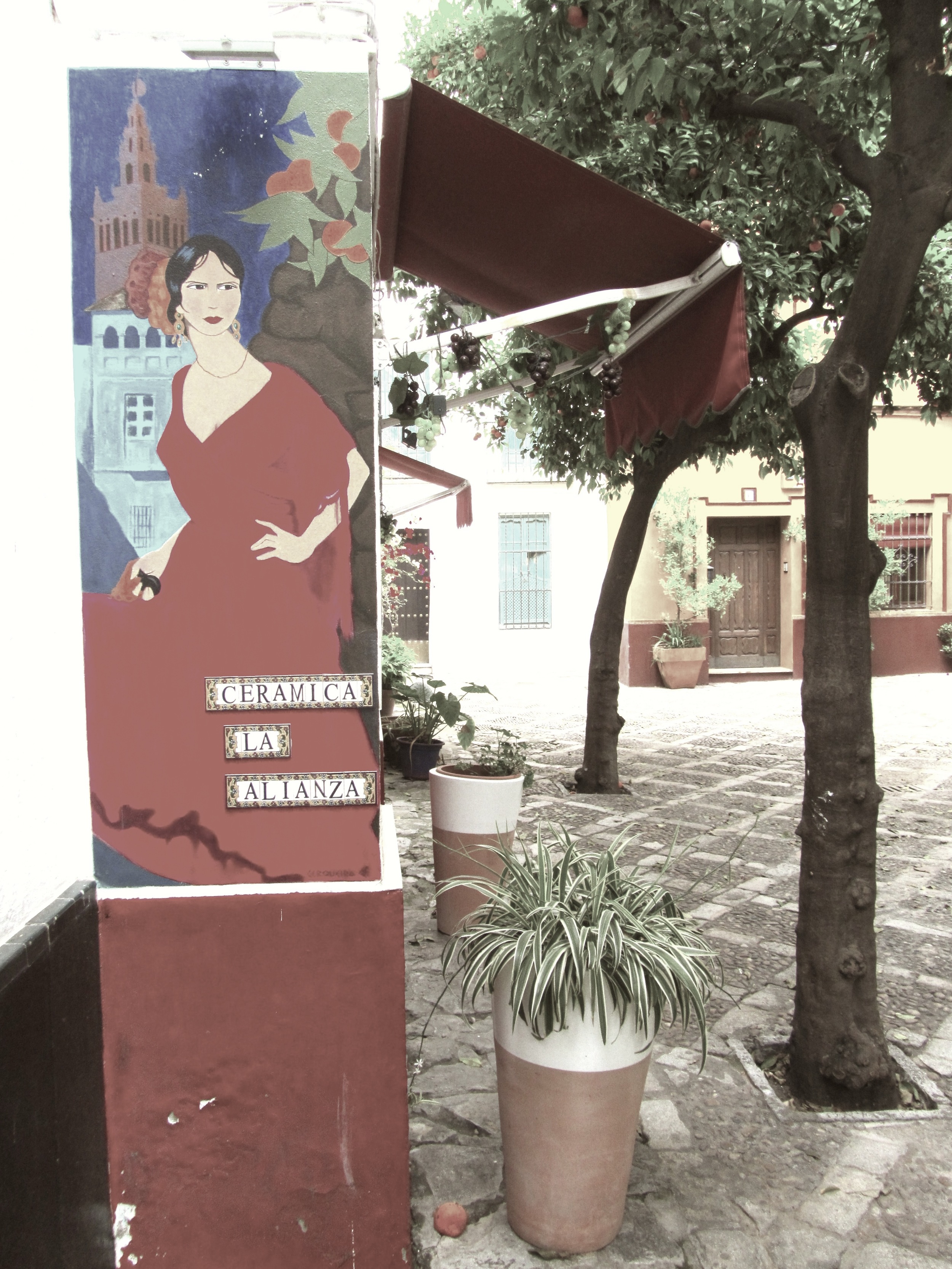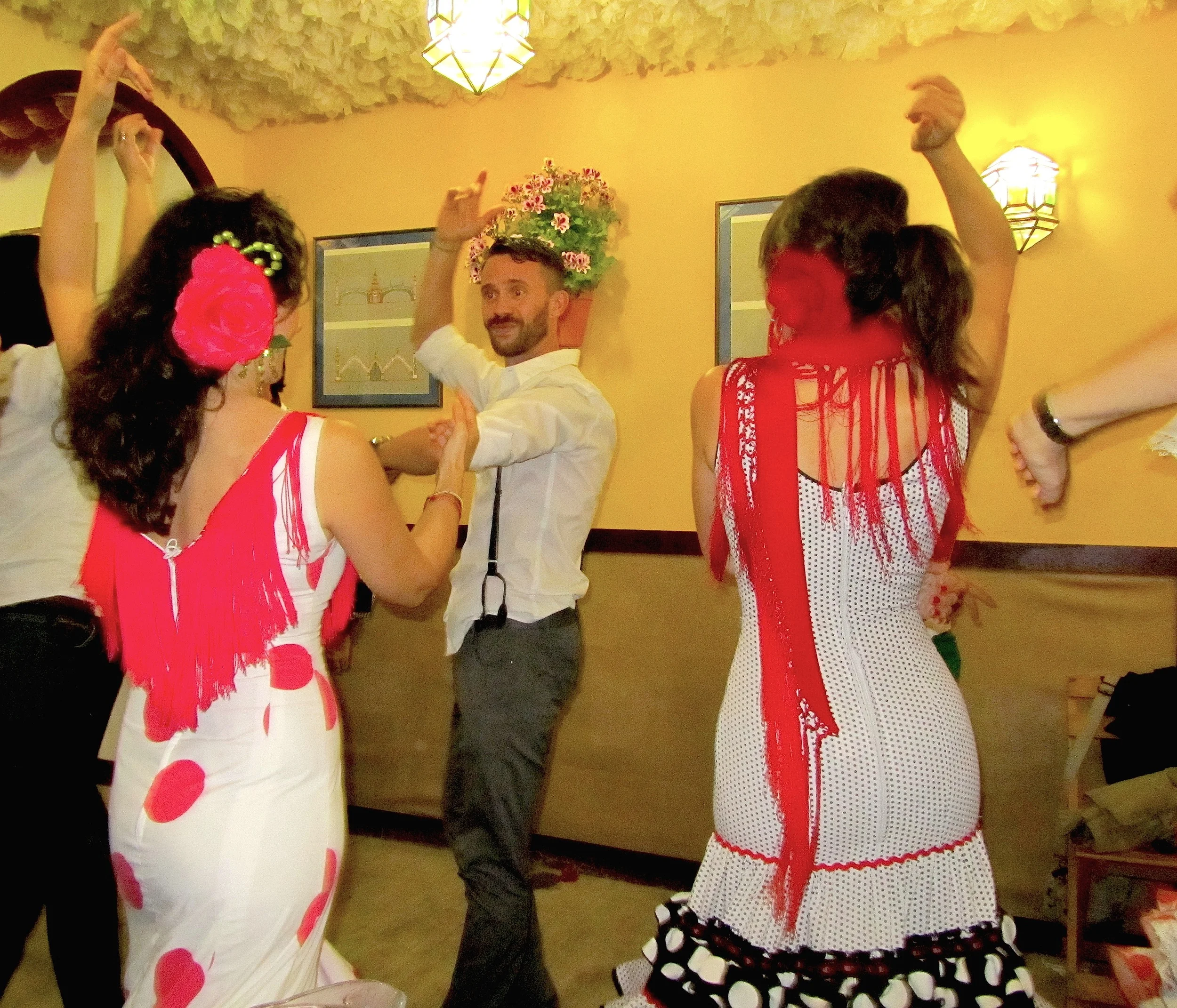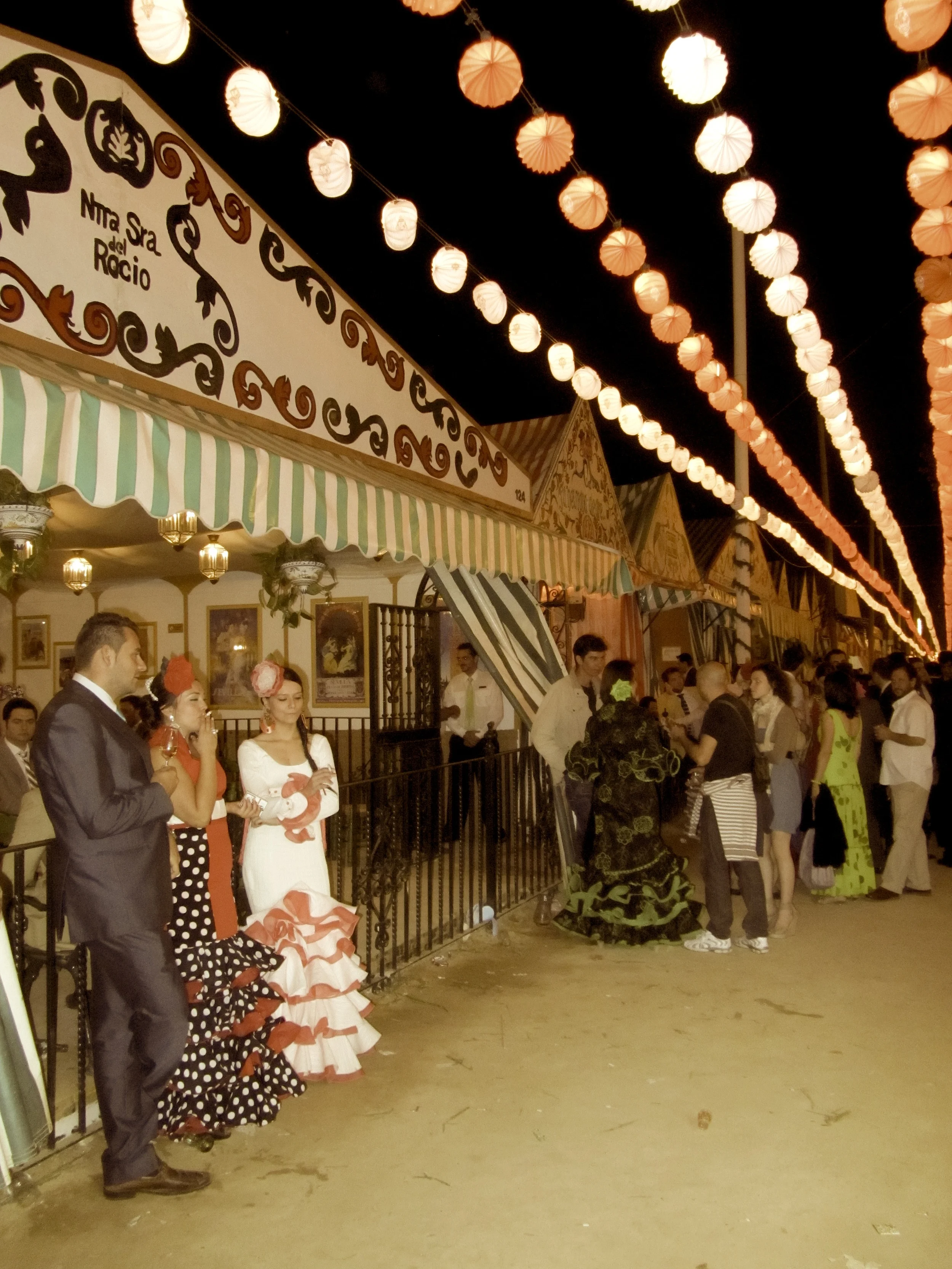The fairgrounds in Sevilla, Spain during Feria are filled with women in flamenco dresses
The annual spring festival is one of the most fun things to do in Seville, Spain. Follow these seven tips.
Our first clue was the flamenco dresses. They were everywhere.
Duke and I happened to be in Sevilla, Spain for its spring festival, Feria. The six-day celebration takes place two weeks after Semana Santa, Easter Holy Week. Instead of creepy parades of men in colored robes with pointy hats, Feria is a nonstop party.
“You can drink all night, maintaining a steady but slight buzz, without getting so drunk you pass out.”
Here’s how best to take part in the festivities of Feria:
Couples all dolled up for Feria walk the streets of Sevilla
Treat yourself to a flamenco dress.
As I mentioned, anywhere you go in Sevilla during this time, you’ll see women and girls of all ages wearing flamenco dresses. The traditional flamenco is black, white and/or red with polka dots (traje de lunares), finished with dramatic ruffles that start above the knees and cascade down to the hem. While there are modern versions in all sorts of colors, the basic silhouette doesn’t change.
The dress originated in the Gypsy, or Roma, community in Andalusia in the south of Spain.
To complete the outfit, some women put their hair into a bun, drape a fringed shawl over their shoulders, and place a flower behind their ear or atop their head. And don’t forget the fans that can be opened with a dramatic snap!
I thought it was great to see all sorts of people respecting their local heritage and donning a flamenco dress. You can imagine kids in the United States being too cool for school and not wanting to play along. But it seemed as if in Sevilla, everyone joined in the fun.
Women in flamenco dresses are common sights in Sevilla during Feria
Befriend some locals.
Easier said than done, I know. But it’s your only ticket into the most exclusive parties during Feria, the casetas.
We lucked out. Our friend Dan was living in Sevilla and hooked us up with a caseta party.
This is what happens inside those Feria casetas. All night long
Lined up along the extensive fairgrounds, beneath strands of colored lights are more than 1,000 tent-like structures known as casetas, literally, “little houses.”
Prominent families, groups of friends, businesses and other groups own these coveted temporary structures.
People pay a great deal for a caseta, so they want to make sure they get their money’s worth, Dan told us.
The Feria fairgrounds, with a line of casetas, where the real parties take place
Be ready to stay up late.
Dan and his friends partied every night during Feria, dancing until the wee hours — and then going to work with very little to no sleep.
Try the official drink.
At the back of the tents are a small bar and kitchenette.
We drank a refreshing concoction call rebujito — a mixture of a lemon-lime soft drink and the sherry the region is famous for. (“This isn’t your grandmother’s cooking sherry,” our friend Jo assured us.)
Where does rebujito get its name? When I asked at the party, someone twirled his finger in the air and said it meant “round and round.”
It actually comes from the diminutive of the verb rebujar. So technically I suppose it means something like “little messes”?
No matter its origin, the 50/50 ratio means you can drink all night, maintaining a steady but slight buzz, without getting so drunk you pass out. After all, participants need to dance till dawn — and then put in a day’s work.
Be sure to eat the tapas — even if it's pig cheeks.
The only food that was passed around was a tapa in a brown sauce covering a mystery meat. When we asked what it was, someone said, “pig” and grabbed their cheek.
We might not necessarily be inclined to try pig cheek, but hunger can work wonders to lower one’s culinary inhibitions. Duke and I grabbed a toothpick each and plopped the app into our mouths.
We gave each other the raised-eyebrow, not-bad nod and grabbed some more.
It wasn't until we had returned to the States and I stopped into Publican Quality Meats one lunch break that I discovered what exactly pig cheek looks like when it’s not drowning in sauce.
The butcher pointed at a thick strip of fat.
“That’s pig cheek?” I asked.
He nodded, adding that the restaurant often uses it instead of bacon.
I honestly couldn't see even a thin vein of meat within all that fat.
“Well, no wonder we liked it so much,” I sighed.
Cristina and Duke dance the Sevillana
Learn the local dance.
Even though we hardly spoke any Spanish, and hardly any of them spoke English, we found most people in our caseta friendly. Cristina, a gorgeous woman who was there with her girlfriend, taught Duke how to dance the Sevillana, the city’s local dance.
She somehow led Duke while also giving him directional hints with a simple nod of her head. Watching them twirl around the dance floor, you’d never know it was Duke’s first go at a Sevillana. He and Cristina seemed to have a psychic link.
Wander the carnival.
After too many pig cheeks and not enough rebujitos, Duke and I decided to take our leave. We left the caseta to wander the fairgrounds. One whole section houses amusement park rides and a midway with games. This area, for some reason, is called Calle de Infierno, or Hell Street.
If you find yourself in Sevilla in early spring, try to time your visit to coincide with Feria. It’s a spectacle worth being a part of — if only for the flamenco dresses. –Wally


























